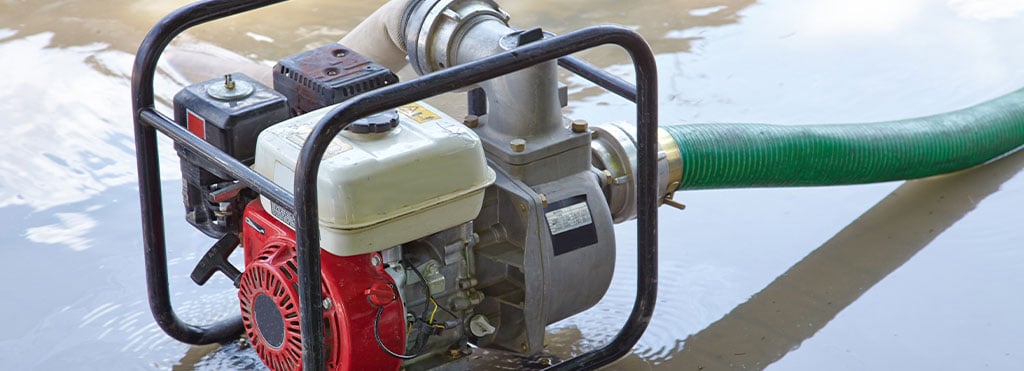A comprehensive guide to purchasing the best water pump, learning about its structure and operational purpose.
The Complete Guide to help you choose the Best Water Pump
by the Real Experts of Equipment for Irrigation Treatments.
The purchase of the best water pump requires a good degree of knowledge and experience in the field, otherwise the risk is to get lost among the many different types on the market. Before moving forward with the purchase, it must be clear what the purpose of the machine is: there is the right tool for every job, and the water pump, although this term may seem rather generic, is a very specific tool. The purpose of this purchasing guide is to help you find your way around the many types of water pumps, by explaining their construction features and operational purposes.
CONTENTS
1. The uses
The choice of the best water pump, before being based on the brand and price of the product, should be made according to the actual use of the machine. The first major distinction in the field of water pumps is the type of water with which the machine comes into contact.
The uses for which water pumps are suitable include: “small” surface irrigation (e.g. for vegetable patches) and transfer (e.g. from one cistern to another).
ATTENTION. The suitability for the combined use with sprinklers of different typologies or various real irrigation systems is not guaranteed, (as they require planning by a qualified technician and a number of calculations in terms of flow rate, head lift, pressure, pipe diameters, valves, nozzles, and so on), which may require more specific types of pumps for water systems.
1.1 Clean water or dirty waters
The water pump can therefore be used for different purposes which are divided into 2 main groups:
- clean water treatment
- dirty waters treatment
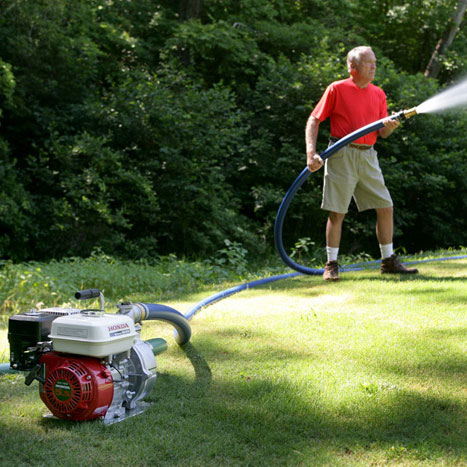
Use with clean water 
Use with dirty waters
When we talk about clear or clean water, we are referring to irrigation treatments or filling operations of tanks and cisterns. Dark, dirty or waste waters, on the other hand, are typical of all those operations involving the drainage of muddy water or with dirt residues.
The 2/4-stroke water pump for dirty waters can efficiently work with liquids that may also contain solid parts, such as stones and sand, and it’s ideal for emptying sites excavations, ponds, cesspools and the like. It is usually equipped with a special filter that is resistant to the shocks and wear that dirty water debris inevitably exposes it to.
There are structural differences between a water pump for dirty waters and a standard one for clean water: the former are sturdier and more resistant, and they typically feature large-width fittings to avoid the accumulation of debris. Let’s see the technical details of both types.

2/4-stroke water pump for clean water 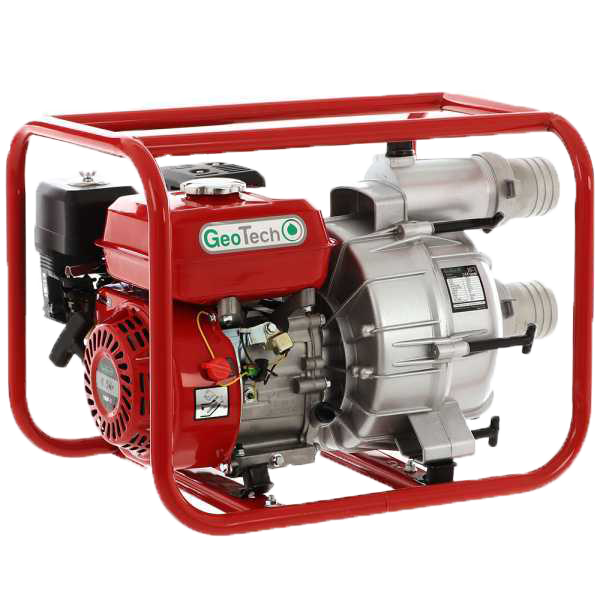
2/4-stroke water pump for dirty waters
1.2 Types of water pumps
Depending on their use, water pumps can be divided into three main types, which also necessarily determine the structure of the machine:
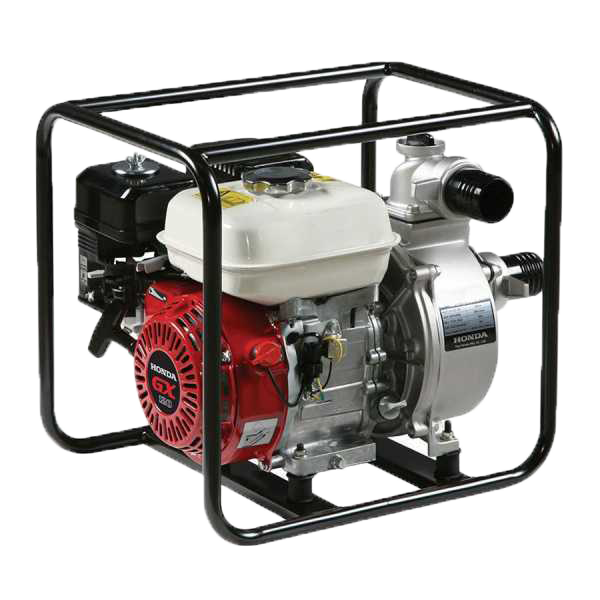
Standard water pump 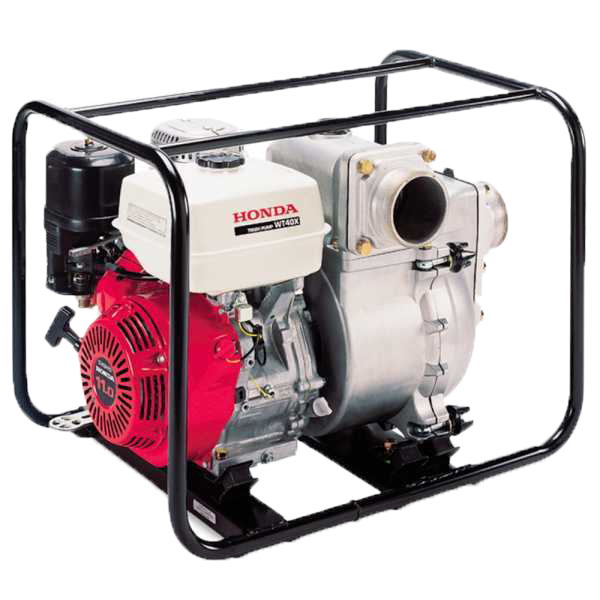
Water pump for dirty waters
High head water pump
- Standard water pumps are primarily suitable for irrigating or transferring clear, clean waters. They are ideal for pumping water from any kind of source and perform the function of flood irrigation for the vegetable patch or garden. In particular, they prove to be very useful in the absence of electricity, or in the countryside when you need to extract water from a well, from a cistern or from ponds and tanks that are difficult to reach, or even when you have to drain a cellar or a garage that has been flooded. These type of water pumps have a compact and low weight structure to facilitate transportation (and therefore they do not come with a protective frame), or they can be equipped with a wrap-around steel frame (with tubulars) . The water pump, supported by the frame, will be more stable as well as being significantly more resistant because it is protected from unwanted shocks.
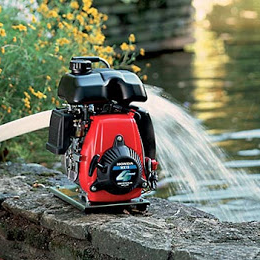
Portable water pump without supporting frame 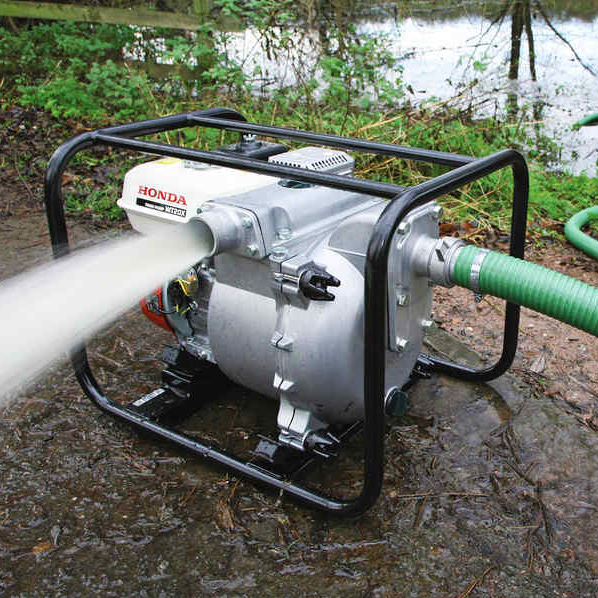
Water pump on standard frame
- Water pumps for dirty waters, as already mentioned, allow to work with water characterised by solid parts such as stones or dirt residues. They can be used in construction site excavations or agricultural pits, but it is important to note that they are not suitable for treating real mud. A special metal filter is usually supplied with the machine to protect the pump from being hit by residues in the dirty water.

Koshin water pump for dirty waters 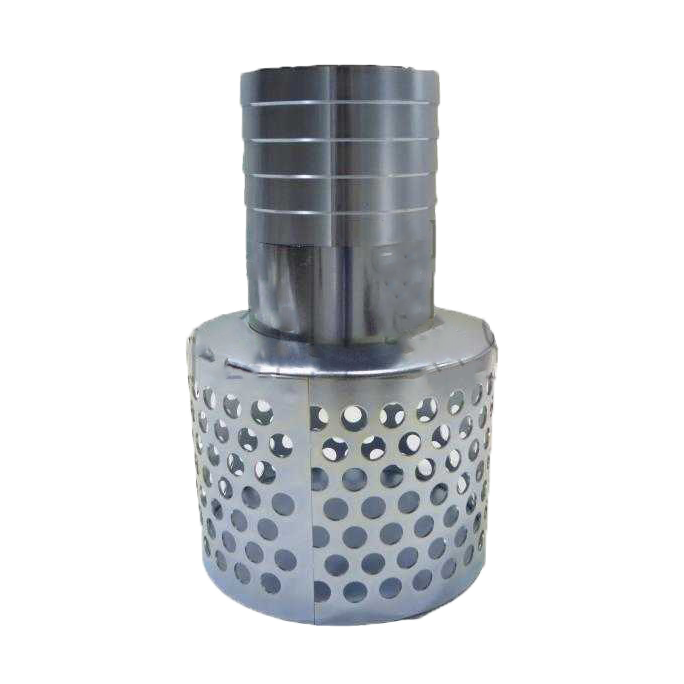
Metal filter for dirty waters
- High head water pumps differ from standard water pumps in that they are able to provide a higher head lift, and therefore reach greater “distances”, but with a lower flow rate. But what is the head lift? In the next section we will look at the relation between two of the most important technical parameters of a water pump, namely the flow rate and the head lift.
2. Flow rate and head lift relation
When choosing the best water pump, the characteristics of the machine itself and those of the area to be irrigated or the work to be carried out must be taken into account. In accordance with this, it will be possible to decide on the size and structure of the water pump that best suit our needs: a fixed water pump can be taken into consideration in the case of lawn or garden irrigation, or a transportable or wheeled pump can be chosen if you need to irrigate areas that are far apart or that need to be reached.
Once the type of water to be treated and the size of the water pump have been assessed, it is time to look at the two basic technical parameters of a pump:
- flow rate
- head lift
- The flow rate is the amount of cubic meters of water per unit of time that can pass through the pump section. In other words, when we talk about flow rate, we mean the amount of water that the pump is able to displace over a given period of time (generally this value is calculated per hour or per minute). Therefore, depending on the user’s needs, it will be possible to figure out which pump to choose. For example, the larger and more capacious the basin from which the water is to be pumped, the more a high-capacity water pump is needed to carry out the job in the shortest possible time.
- The head indicates the maximum lifting height that the water pump can cover when transporting water. The head basically indicates the ability of the pump to move water from one point to another and can be measured as the difference in metres between the point where the water is drawn and the point where the pump can transport it.
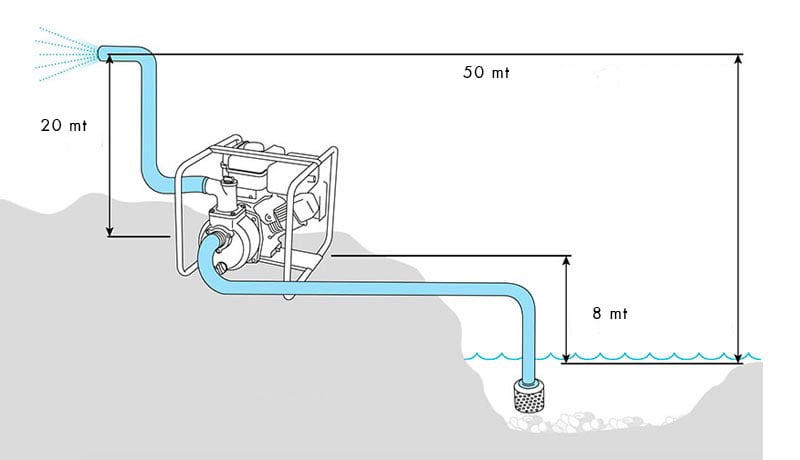
The head is therefore a value that takes into account the distance that must be reached + the height to which the water must be brought. Let’s take a practical example to understand how to calculate the head:
SIMPLIFIED METHOD FOR CALCULATING PUMP HEAD.
3 metres distance is equivalent to 1 metre in height
For a height of 20 m and a distance of 50 m, a water pump with a head of at least 40 m will be required.
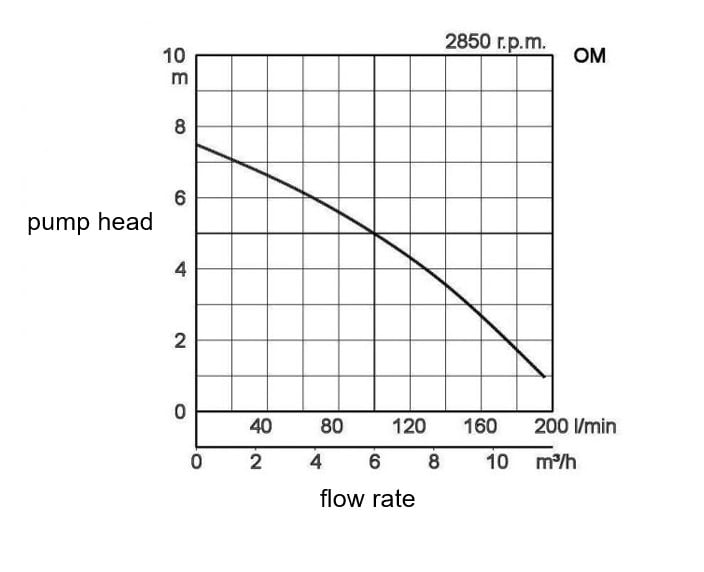
THERE IS AN INVERSELY PROPORTIONAL RELATION BETWEEN HEAD AND FLOW RATE. At maximum head the flow rate is 0. The head and flow rate values are displayed in a graph: for each flow rate value, the resulting head value can be identified. The curve passing through the points is generally a straight line that can be more or less flat, or vice versa, more or less steep. Pumps with a “flatter” curve provide little head variation but large variations in flow rate value; pumps with a “steeper” straight line generate large head variations and a more constant flow rate.
The head is the height up to which the water pump can push the water. This value, generally measured in metres, should be considered in relation to the flow rate. There is essentially an inversely proportional relation between flow rate and head, as can be seen from the graph.
3. Self-priming water pump
Water pumps are often associated with the adjective self-priming; self-priming water pumps form a separate category and represent a technologically more advanced type of water pump compared to classic centrifugal ones. The difference between a self-priming water pump and a centrifuge one lies in the starting up process.
3.1 Centrifugal or self-priming
Centrifugal water pumps, as the name suggests, move the water through a centrifugal force. The water is fed into the machine via the suction hose, enters the pump impeller and is then pushed out via the water pump delivery.
A water pump lifts when the machine’s suction hose and pump are filled with water, then the air is removed from the suction hose and the water pump is activated.
- Centrifugal water pumps are manually primed and require both the suction hose and the pumping unit are filled with water in order to be activated; the suction hose is fitted with a foot valve. The impeller of the machine and the entire hose must then be filled (the hose is closed by the foot valve); when the water pump is activated, the foot valve cap will open.
- In self-priming water pumps, priming is automatic, which means that they fill up automatically. Only the pumping unit (and not the hoses) needs to be filled to activate the machine.
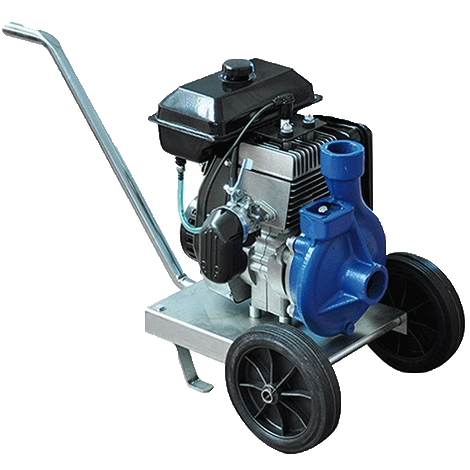
Wheeled centrifugal water pump 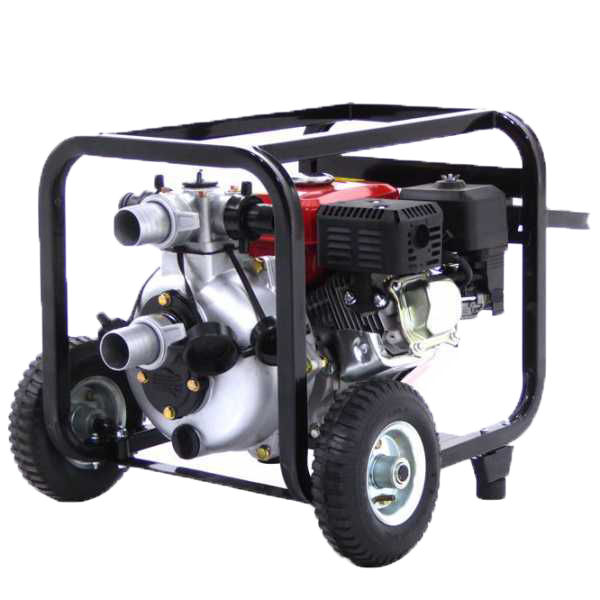
Self-priming wheeled water pump
3.2 Start-up and self-priming benefits
Self-priming is the ability of a pump to draw in air from the suction hose during start-up. How does it start up?
- when starting up for the first time, the water pump body must be filled via the pump’s upper filling cap;
- when activated, the pumping unit generates a vacuum which draws in the air in the suction hose;
- the air mixes with the water in the machine body and then escapes through the delivery (the water being heavier than the air does not escape, but continues to rotate in the pump)
- once all the air has been released, the water pump starts working.
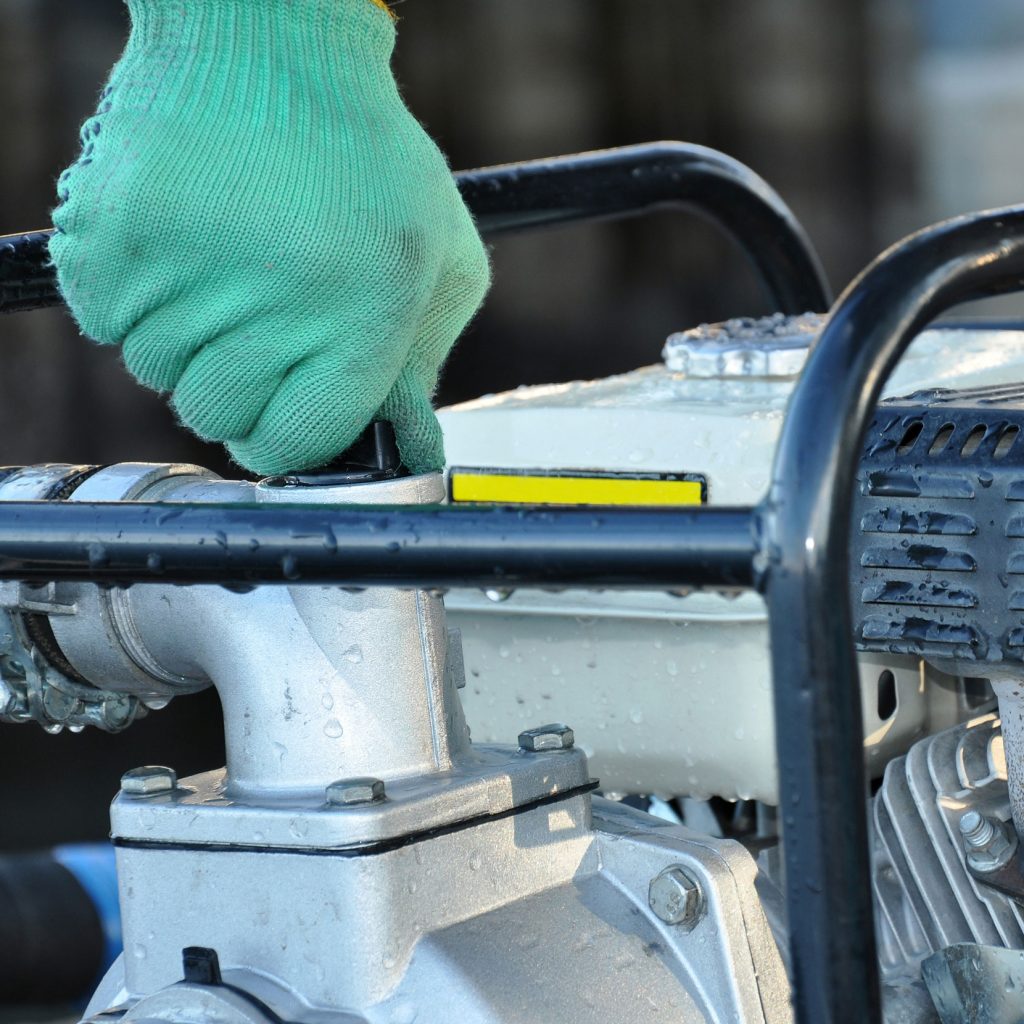
Water pump upper water inlet cap 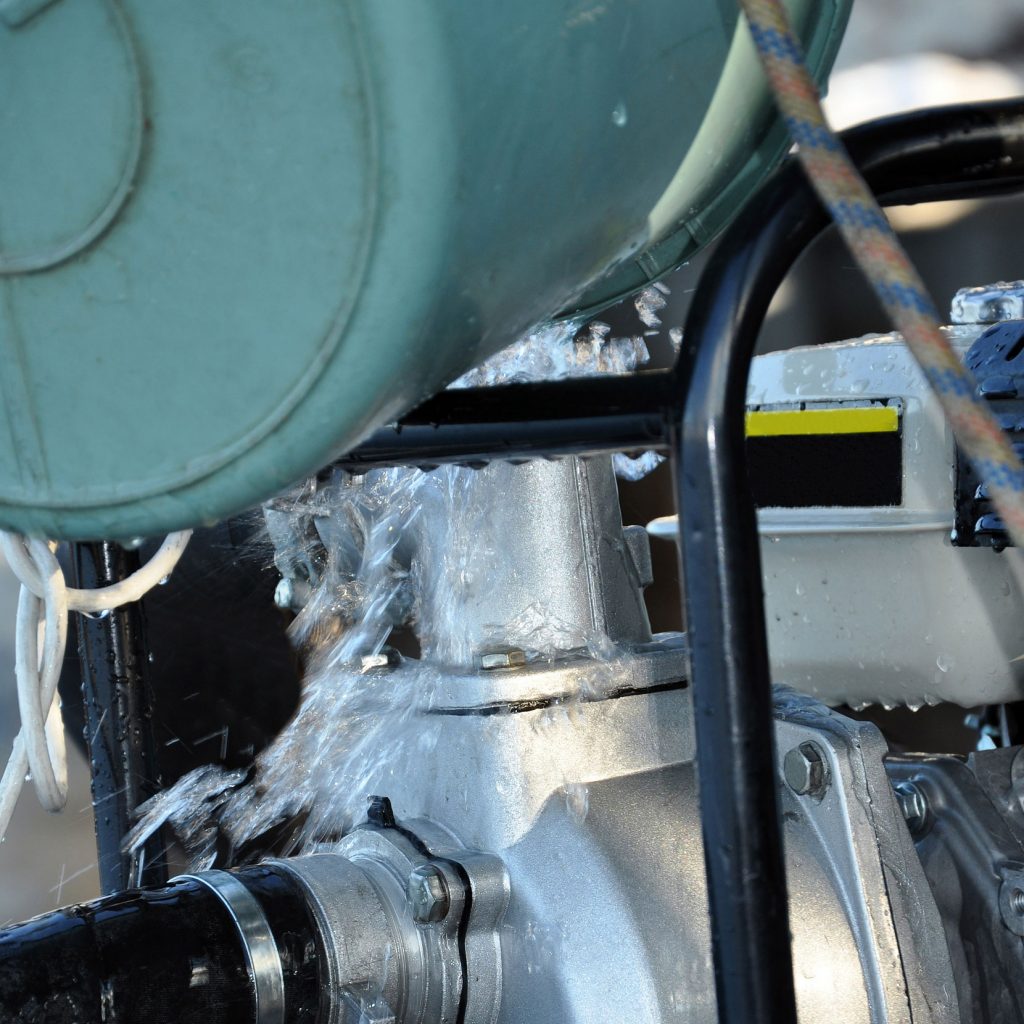
Filling the pump via the dedicated inlet
What are the benefits of a self-priming water pump?
- greater practicality and ease of use;
- greater suction height, which is the distance between the water level and the suction inlet of the water pump (in centrifugal models, it is usually possible to have a maximum suction height of up to 5-6 meters, while self-priming types can reach up to 8 meters).
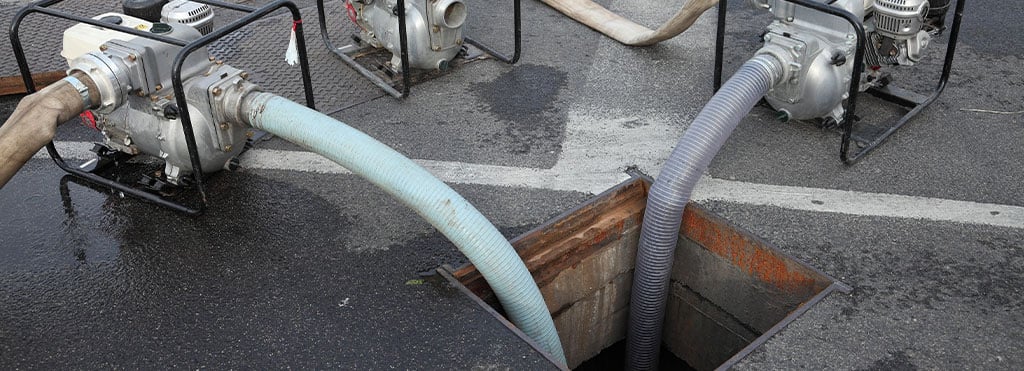
4. 2/4-stroke or diesel engine
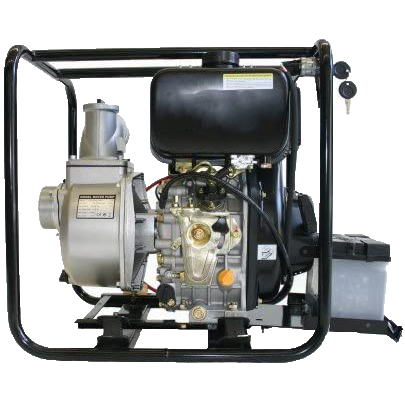
Water pumps with 2/4-stoke engines are the most common type on the market . The vast majority are now equipped with 4-stroke engines (2-stroke engines are slowly disappearing from the market due to their reduced durability and power) and, depending on their characteristics, can be suitable for different types of irrigation or drainage work of varying intensity.
The diesel engine, in general, is a suitable choice for those who need a machine that is expected to last despite fairly heavy use, and for those looking for a working tool that is always ready for use, even after long periods of non-use. One of the many advantages of the diesel engine is that it consumes less fuel than a 2/4-stroke one.
- A diesel water pump is therefore recommended to withstand very long irrigation working sessions, it is a perfect choice for those who want to make a purchase aimed at quality, robustness and durability.
- A 2/4-stroke water pump is more suitable for shorter works or occasional use.



